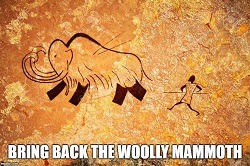

 The Accurate Reloading Forums
The Accurate Reloading Forums  THE ACCURATE RELOADING.COM FORUMS
THE ACCURATE RELOADING.COM FORUMS  Hunting
Hunting  African Big Game Hunting
African Big Game Hunting  Giant African Snails
Giant African SnailsGo  | New  | Find  | Notify  | Tools  | Reply  |  |
| One of Us |
Giant African Snails, once eradicated from US, confiscated from suitcase at Georgia airport Paulina Dedaj By Paulina Dedaj | Fox News  Customs and Border Protection agents in Georgia seized two Giant African Snails, a species that was once eradicated in the U.S., from the luggage of someone traveling back from Nigeria. Candie and Chipper, two members of the “Beagle Brigade", were on patrol at the Hartsfield-Jackson Atlanta International Airport Thursday when they alerted CBP’s Agricultural Specialists to an individual’s bag at the international arrival baggage claim area, the agency said in a press release. After searching the suitcase, agents found two of the giant snails, alive, and several illegal fruits and vegetables that the Beagles also alerted agents to. Candie and Chipper, two members of the “Beagle Brigade,” sniffed out the contraband found in one traveler's bag. The Giant African Snail was first found in the U.S. in Florida in the 1960s and took approximately 10 years and $1 million to eradicate it, according to the U.S. Department of Agriculture (USDA). It was later reintroduced into Florida and Hawaii in 2011. The snail, which can grow up to eight inches long, is considered “one of the most damaging snails in the world” as it feeds on at least 500 different types of plants and can cause structural damage to stucco and plaster buildings. It also can be harmful to humans because it carries a parasitic nematode which can cause meningitis. According to the USDA, Giant African Snails are difficult to eradicate because they reproduce quickly, producing around 1,200 eggs in a year. The snail, which can grow up to eight inches long, is considered “one of the most damaging snails in the world” as it feeds on at least 500 different types of plants and can cause structural damage to stucco and plaster buildings. (U.S. Customs and Border Protection ) “CBP is on the frontline 24/7, searching for anything entering our country that could potentially harm our citizens,” Lee Deloatch Atlanta CBP Acting Area Port Director said in a press release. “Our beagles sniffing out these snails highlights how valuable our canine members are to protecting the U.S.” The snails were turned over to the USDA for further evaluation and the prohibited food was destroyed. The traveler was not fined or charged in the incident. It was not immediately clear if the snails were intentionally brought in to the U.S. or if they managed to find their own way into the suitcase. ~Ann  | ||
|
| One of Us |
We have them here in TZ though never seen one 8" in size, have seen some pretty large ones; I find the occasional one on my perimeter wall but never any trace of damage other that the usual trail of saliva (as with all species of snails and slugs) which anyway washes off with the first rain shower. During the rainy periods you will find them out and about foraging on grass between dusk to dawn and after a few months disappear altogether as they go into hibernation; the smaller ones are edible and quite tasty, though have yet to hear of anyone contracting meningitis from having eaten them - I do know of one particular case and exclude it having being contracted from contact or consumption of Giant African snails. Much ado about nothing if you consider the damage caused by the common garden snail which if it gets into your garden will devour just about any form of plant and vegetable. The Nigerian was probably importing the snails for breeding purposes, either to be eaten or sold as pets as he had also stocked up with some typical greens for them to eat though he could've bought those locally in any supermarket. Customs & Border Protection agents should concentrate more on Drug Trafficking and Illegal Immigrants. | |||
|
| one of us |
Lissachatina fulica found in the Old Transvaal Low veld Where they come from is an enigma because in the dry winter season all traces of them are the white sun bleached shells then suddenly with the first summer rains they appear from nowhere !   | |||
|
| One of Us |
I picked an empty giant snail shell that was all bleached out at Mokore in the Save and brought it back with me. I will find it and post a picture. https://i.imgur.com/FKVtmpa.jpg Mike | |||
|
| One of Us |
Is it really necessary to use a .44 on them? Nothing left for the garlic butter...
| |||
|
| Powered by Social Strata |
| Please Wait. Your request is being processed... |
|

Visit our on-line store for AR Memorabilia

